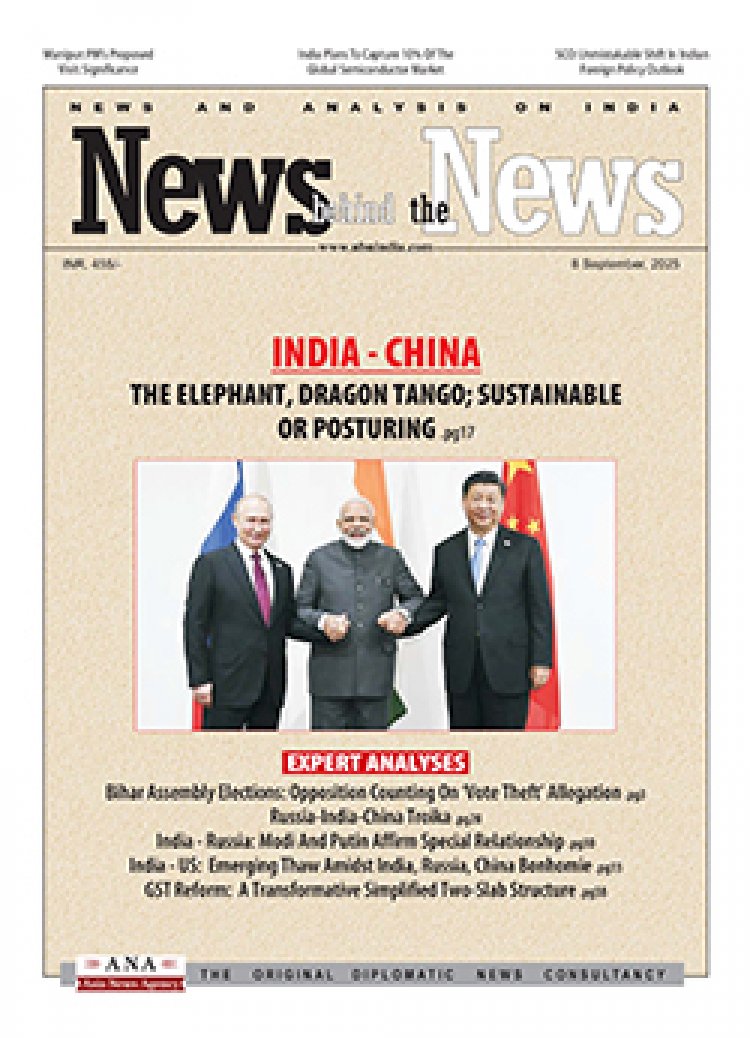BJP Down but Not Out: Its Growth Strategy
STORIES, ANALYSES, EXPERT VIEWS

The BJP has grown in geometric proportions over the last decade or so. There was, until recently, no limit to how much more it can grow and how soon it will be able to achieve its objective of a Congress free India. Things have dramatically changed after the Lok Sabha elections.
In fact, some observers like Sunil Gatade (Delhi-based journalist) not so positively inclined towards PM Narendra Modi, feel he is “now on the retreat.” The U-turns on certain controversial issues is seen as evidence. The delay in holding Assembly polls in Maharashtra and Jharkhand, as also the 46 byelections, including 10 in Uttar Pradesh and one for the Lok Sabha, “does not show the BJP in high spirits.”
At the same time, a “buoyant Opposition parties have brought to the fore a new narrative, and the media too is now changing a bit to factor in the new reality. The silent burial of the controversial Broadcasting Bill is another signal of the retreat of the strong leader….” The party also has no independent president.
The twin strategy
The BJP however, is a resilient party. It believes it can reset, learn from past mistakes, to become an even more dominant party. And that is why it has adopted a strategy of wooing senior leaders from other parties and strengthening its organisation by increasing the enrolment by a factor of millions.
The latest to come to the BJP fold is former chief minister of Jharkhand, Champai Soren, an influential tribal leader from the Jharkhand Mukti Morcha (JMM). Champai Soren got miffed when the current chief minister, Hemant Soren, allegedly involved in a scam, came out on bail and took back the chief ministership. At the same time, BJP has also announced a new drive to recruit new members. The party plans to recruit 100 million new state members on a parallel track. The BJP is already the world’s largest party, with 180 million members. The Congress has 130 million members.
13 former chief ministers, mainly from Congress, have joined the BJP
Recent developments, according to The Statesman, “can be seen from two perspectives: the BJP’s success in attracting VVIPs and its deliberate expansion programme. According to the National Election Watch-ADR, critical reasons for defections and party switching include the absence of value-based politics, greed for money and power, reward of political positions, and lack of efficient, honest, and credible leaders. Champai is not the only one whom the BJP has lured. In the last decade, 13 former chief ministers, mainly from Congress, have joined the BJP…….”
Notable leaders who left the Congress include Himanta Biswa Sarma, Ghulam Nabi Azad, Captain Amarendra Singh, Kapil Sibal, Jitin Prasada, R.P.N. Singh, Milind Deora, and Jyotiraditya Scindia. Former Maharashtra chief minister Ashok Chavan, Ritesh Pandey, Sangita Azad, and others have recently joined the BJP.
These leaders, assess The Statesman “fear becoming politically irrelevant when their party loses power. By aligning with the dominant BJP, they hope to gain control. They also seek to secure a political future for their children…..”
The BJP welcomes these defectors for three key reasons: "First, it weakens the party from which the defection occurs. Second, it allows the BJP to gain known leaders from established parties, strengthening its ranks. Third, given the BJP’s need for developed second-rung leaders or leaders at the state and district levels, it is easier to absorb imported men and women, to showcase the party’s strength…..
Flip side: There is a flip side to this. “The BJP’s long-time loyal members are unhappy when newcomers get good positions while they despite having been faithful do not. This has happened in the past…..”
Organisational growth
And “over the last decade, the BJP has seen significant growth in its organisational footprint. In the 1980s, upper middle-class, urban Hindus primarily supported the BJP. It has since built a broader political base, indicating its increasing influence. Between 2014 and 2019, well over 100 million people joined nationwide. Eighty thousand leaders and workers from various parties have joined the BJP, which aims to recruit about 100,000 leaders at national and district levels. In the last decade, many influential Congress leaders, including former chief ministers and ministers, either shifted to the BJP, revealing the party’s dominance, or sought other alternate paths.”
Infusing young blood: As part of beefing up the organisation, Prime Minister Modi recently made a call from the Red Fort to bring one lakh youth from families with no political associations into politics. This, according to Tejasvi Surya (Member of Parliament, Lok Sabha & National President, Bharatiya Janata Yuva Morcha) and Suyash Pande (National Co-Incharge, BJYM Policy, Research & Training and Advocate at the Supreme Court) “will prove to be a milestone in the evolution of our political system.” This is because “low youth participation and representation is a growing concern.” And “political parties have an inherent duty to train and create future leaders…”
The BJP inherits an “excellent framework of cadre training. It is bequeathed with ideological moorings from the RSS. Through organisational reforms, policy initiatives and novel youth programs, BJP’s youth wing—the Bharatiya Janata Yuva Morcha (BJYM) is training its ‘Karyakartas’ (volunteers) to shape a dynamic and motivated cadre of young political workers. The blended training prepares the cadre to own up to the responsibility of not only safeguarding the nation’s democracy but also ensuring it is progressive and rooted in civilisational ethos.”
















